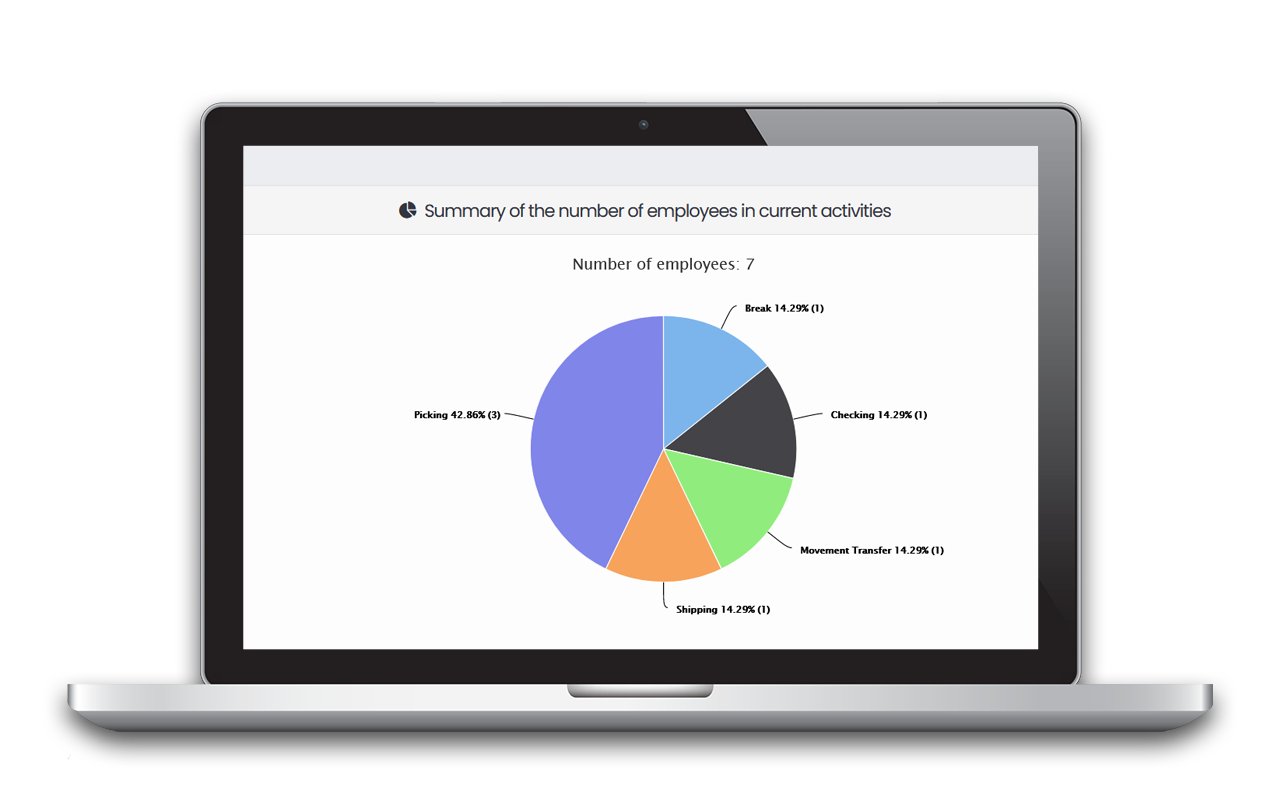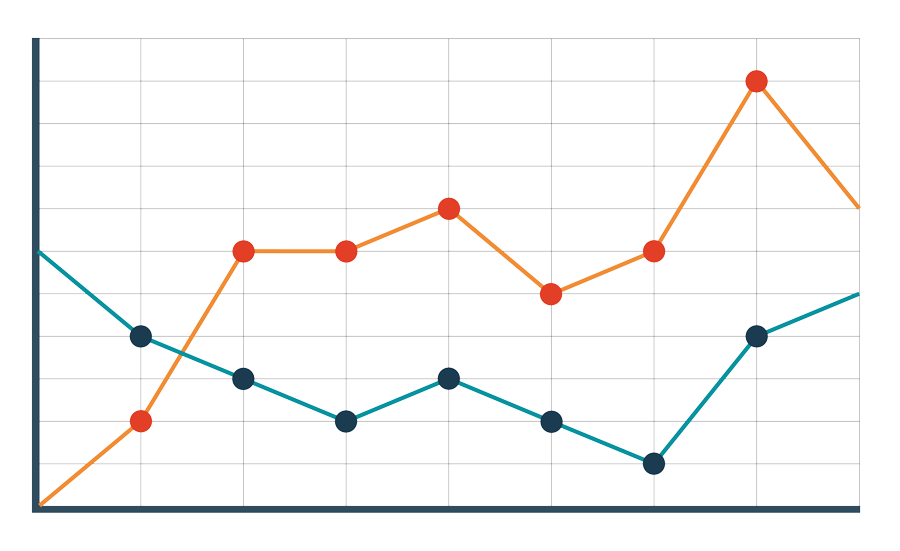Single place of centralized data on working time & performance
Browsing through multiple databases is time-consuming and inefficient. Labour Management System by Time Harmony allows to verify performance, time of performed activities and identify the waste. The system sends reports to the indicated e-mail addresses, providing managers with current data on the course of processes and data for analysis and optimization.

Discover main functionalities of our
Labour Management System
Measure the duration of an activity
Information about the duration of the activities performed. The data sent online gives you the opportunity to react to the course of ongoing processes. You gain full insight into the work of your team hour by hour and can monitor the pace of order execution in real-time.
Measure efficiency and performance
Measure all activities for performance with the ability to adjust standards and parameters. Depending on your needs, the performance data is shown as a percentage or in nominal terms. We offer a wide range of data filtering so that you can quickly get to precise data.
Measure non-systemic activities
Our Labour Management System is a tool created based on experience. Learn more on the benefites it will bring you.

Entrepreneur's Guide
Learn more about the practical applications of the Labour Management System and the benefits of measuring the time of activities and employee productivity for entrepreneurs

Benefits of implementing a Labour Management System
Despite increasing automation, human capital is still the greatest potential. Therefore, it is crucial to make the best use of the working time of the employed staff.

Why measure employee productivity?
We've found 10 reasons why it's worth measuring performance. And the benefits are mutual - for the employer and the employees. See for yourself!

Case story: idle activities reduction
See what savings can be brought by reducing unproductive activities on the example of our Client.

System activities are those recorded in the Customer's internal system using a scanner or other workstation. System activities are transferred via the interface to Time Harmony, in order to calculate their duration and the efficiency of employees in these activities in our system, thanks to the definition of standards and parameters. In combination with information about out-of-system activities measured on Time Harmony devices, managers receive a complete set of data on the time of all activities and full information about employee performance.
Out-of-system activities are those performed outside the customer's internal system (WMS/ERP). Some of the non-system activities are performed as part of the process. These are non-systemic – procedural activities. These activities are necessary for the process, however, they are usually not measured. Time Harmony measures them in order to provide the most complete information about the course of processes and activities performed by the employee. A separate group are unproductive idle activities. It is worth identifying, measuring and striving to reduce them as part of process optimization, because they do not add value to the process.
Information about the duration of system activities is sent to the Time Harmony system via an interface. Time Harmony presents data on the duration of activities in comparison with the performance of an employee/team or process, along with a summary of non-systemic activities in relation to selected parameters and categories.
Out-of-system activities are declared by employees on Time Harmony devices, in the personal application or via the web panel. The process of recording activities is simple and intuitive. A well-defined activity tree allows you to quickly record the work being performed. Time Harmony calculates the time of recorded out-of-system activities, taking into account the assigned norms and parameters. Non-systemic activities are an important part of an employee's time – they can account for up to 30% of the employee's total working time. Therefore, it is worth betting on a tool that will help manage this area.
A big advantage of the Time Harmony system is the centralization of data. System and non-system activities, working time and performance data collected from various sources are presented in one tool in the form of reports and dashboards. Data on productivity in nominal and percentage terms, as well as on the division of duties (what activities employees are in) and the pace of work are presented in real time, allowing you to react here and now.
Time Harmony is a complement to the data provided by the WMS system. Time Harmony records out-of-system activities, providing managers with information on what activities an employee is involved in between subsequent scanner activities. Information about system activities is sent from the WMS system via an automatic interface. Thanks to this, Time Harmony presents a complete picture of the activities performed by employees during the working day. By defining standards and parameters, the Time Harmony system calculates performances, presenting them in real time.
Much of the information is generated in the system automatically, so the employee does not have to have many interactions with the system. An example of automation is the combination of a system with turnstiles. Just passing through the gate generates information and opens the work card. After a few minutes, the system informs you about the first scanning activity. Time Harmony automatically calculates how long it took to prepare for work, i.e. the time between coming to work and starting work. The preparation time for work after returning from a break is calculated in the same way. The final exit through the turnstile closes the employee's work card.
The universal interface allows you to export data to external reporting systems, such as Power BI. It is a tool with high computing power, in which it is possible to build your own reports and compile data sent from Time Harmony.
Time Harmony is a single place of centralized data that allows you to verify performance, time of performed activities, identification of waste and evaluation of the employee based on objective data.
Yes, the system sends reports to the indicated e-mail addresses, providing managers with current data on the course of processes and data for analysis and optimization.
Tool for centralized time, activity and performance data. Full control of the course of process and complete knowledge on working time.
